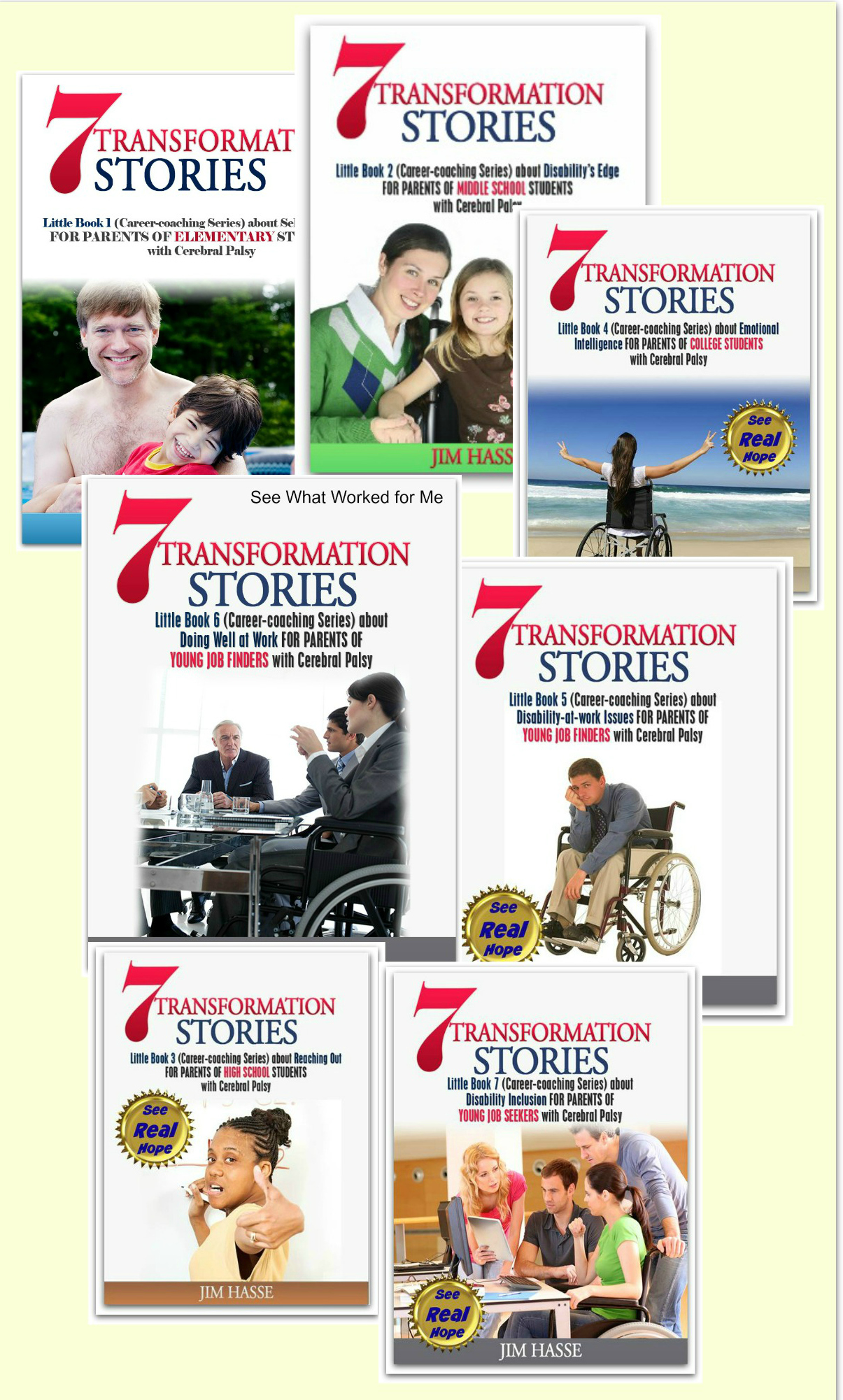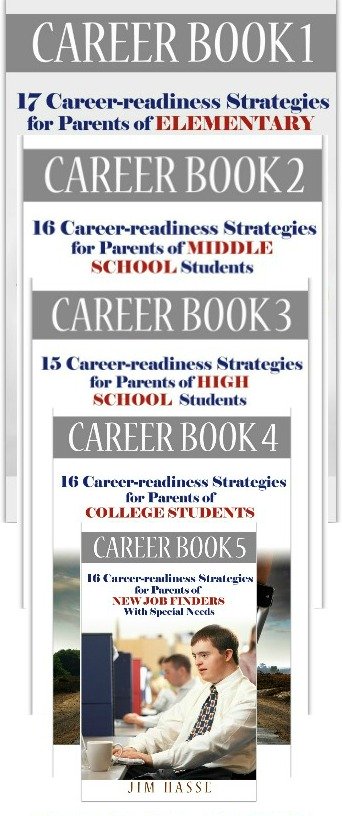Learning Style Test: Cerebral Palsy Career Builder for
College Students
By Jim Hasse, ABC, GCDF, Disability Employment Expert
_________________________________________________________
Here’s an easy learning style test your college student with cerebral palsy (CP) can use to effectively connect with people, a skill which will be invaluable during upcoming second and third interviews with prospective employers.
First, of course, is the challenge of getting that hiring manager to look beyond your son or daughter’s CP.
But, once that’s accomplished, your soon-to-be job seeker needs to quickly ascertain the hiring manager’s approach to interpersonal communication and how that person prefers to learn and process new information. It’s what I call the learning style test.
Knowing that preference (where, in other words, that hiring manager falls in this learning style test) will give your youngster tips about how to complement that style with a presentation in which both individuals feel “we’re on the same wave length."
Getting to that simpatico
feeling requires that your college student:
- Recognize how that hiring
manager is using a particular learning style during the interviewing
process.
- Adjust his or her presentation style so it matches more succinctly the hiring manager’s learning preference because the goal is to help that decision maker internally process information quickly and easily.

Four learning styles
A learning style test normally involves these considerations:
- How did you learn to study?
- Do you learn more easily by reading, watching or hearing material?
- Do you work best in a quiet environment or with some background noise?
- Do you work better independently or in groups?
An individual’s learning style also depends on one’s likes, dislikes, and abilities with regards to reading, public speaking, memorizing, summarizing, problem solving, analyzing, interpreting, and reviewing.
But, let’s go beyond that common learning style test.
In her research about
personality types, Susan
Dellinger, Ph.D., has identified several communication styles she says we
all tend to use in certain circumstances. However, most individuals, she
believes, follow one or two of the communication styles as predominate
patterns. And watching for certain cues, she maintains, can help us identify
which communication mode a person is currently using.
After studying Dellinger's communication research findings and those of others
since 1990, I have used my 28 years of experience in corporate communications
to identify four learning styles in terms of how people tend to process
information within the world of work:
The "focused" individual:
- Learns from first-hand experience, using all five senses.
- Is logically organized.
- Focuses on ideas and tasks and how they affect the bottom line.
- Thinks methodically and predictably but also relies on gut instinct.
The "analytical" individual:
- Is persuaded by logical reasoning, impersonal analysis and systematic planning.
- Is concerned more about ideas than people.
- Needs time to decide and adjust to change.
The "nurturing" individual:
- Relies more on what people say than technical analysis.
- Wants to know how people feel about various options.
- Relies on experience and intuition to make decisions.
The "creative" individual:
- Thrives on change.
- Makes quick decisions.
- Bases opinions on the feelings of others.
- Generates ideas easily.
CEOs of companies or
administrators of organizations tend to be "focused" individuals.
We’ll likely find "analytical" individuals in the legal or finance
departments or in the information services section. "Nurturing"
individuals gravitate to jobs in public relations, sales training and human
resources. We can expect "creative" individuals in the corporate
communications and advertising groups.
These generalizations, of course, are vastly over-simplified. People are more
complicated than that. We usually see a complex mix of styles in every
occupation. A hiring manager can switch from one communication style to another
(just like your son or daughter does).
From my vantage point, this is the learning style test that can help your son
or daughter communicate effectively with a hiring manager about a crucial topic
-- an on-the-job accommodation plan, for instance, during a second or third job
interview with the same employer:
The "focused" individual:
Since this individual is logically organized and thinks methodically,
- Present evidence in an orderly fashion with goals and objectives first.
- Focus on ideas.
- Be brief and concise.
- List pros and cons of each alternative within the accommodation plan.
The "analytical"
individual:
Since this individual is persuaded by logical reasoning, impersonal analysis
and systematic planning,
- Present details before the "big picture."
- Show practical and realistic applications.
- Focus on personal experience with other accommodation plans.
The "nurturing"
individual:
Since this individual wants to know how people feel about various options,
- Present points of agreement first and then the points of known contention.
- Support ideas with stories about previous accommodation experiences.
- Be willing to use trial and error to find the right answer.
The "creative"
individual:
Since this individual bases her opinions on the feelings of others and
generates ideas easily,
- Present the broad issues first.
- Offer novel and unusual ideas about how the accommodation can be implemented.
- Speak to her instincts.
Remarks from the hiring manager such as "I get your drift," "That's on target" etc. show your college student is connecting and communicating with the hiring manager.
If your youngster hears, however, a response such as "Let me think about it," the hiring manager may just be in an "analytical" mode or have something more pressing on her mind. Or your youngster may not be connecting at all, and she's confused and doesn't want to admit it.
Your
youngster, of course, may not be able to determine which is really happening
until the final outcome: he or she gets hired.
That's one small example of why interpersonal communication is an art -- and
not a science -- and why those who know how to communicate well (and use this
learning styles test effectively) within the workplace will always be in demand
in the job market.
Why this learning style test in important
Your son or daughter also gains a couple of important benefits by methodically using this learning style test to quickly build a rapport with a prospective supervisor, who is usually involved in the hiring process and the final decision maker. Here are a few:
- He or she will more likely be able to work out problems with that supervisor -- even sticky ones such as harassment from a co-worker or a sticky accommodation request.
- His or her assimilation into the organization will likely be quicker and more complete.
- Your youngster will likely be more productive in his or her work.
- Your youngster will probably have more opportunity to use his or her skills on the job and acquire new ones.
- He or she will gain a sense of appreciation and security based on accomplishment in a work world that is anything but secure.
- He or she will enjoy work.
- Your youngster will be setting a good example others in the company can cite for hiring other individuals with a disability.
- He or she will be demonstrating effective interpersonal skills, which are essential and valuable in today's job market.
- He or she will be establishing a foundation for a mentoring relationship with the supervisor and for improved personal development and promotion opportunities.
In short, such a relationship, based on an initial learning style test, sets your college student up for success in his or her first out-of-school job and in developing a meaningful career. That’s an environment for strengthening self-confidence.
Return from Learning Style Test to Interview Tips
Go to Cerebral Palsy Career Builders
This is Creative Commons content. You can freely and legally use, share and repurpose it for non-commercial purposes only, provided you attach this sentence and the following attribution to it (including the two links):
Originally written and illustrated by Jim Hasse, ABC, GCDF, owner of Hasse Communication Counseling, LLC, who, as a person with cerebral palsy, served for 10 years as a vice president in a Fortune 500 company during his 29-year career in corporate communication. He’s an Accredited Business Communicator, certified as a Global Career Development Facilitator and author of 14 Amazon books about disability awareness and disability employment issues.





